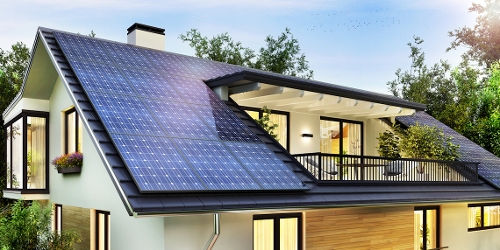
May 24, 2023
In an era of growing concern about the environment and rising energy costs, homeowners are increasingly seeking ways to make their homes more energy efficient. Fortunately, the government provides incentives in the form of tax credits for energy-saving home improvements. These credits not only help you save money on your taxes but also contribute to a greener, more sustainable future. In this article, we'll explore the current tax credits available for energy-saving home improvements.
Energy-Efficient Home Improvement Credit
The Energy-Efficient Home Improvement Credit is a federal tax credit designed to encourage homeowners to make energy-efficient upgrades to their homes. This credit allows you to claim a percentage of the cost of qualified energy-saving improvements, subject to certain limits. The maximum credit you can claim each year is 30% of the cost of qualified energy-efficient improvements, up to an annual limit of $1,200.
To be eligible for the Energy-Efficient Home Improvement Credit, you must make improvements to the building envelope of your existing home, such as insulation, windows, doors, roofs, and certain advanced main air circulating fans. These improvements help to reduce heat loss or gain, thereby decreasing the energy required to heat or cool your home. Qualified heat pumps, and biomass stoves or boilers are also eligible for these tax credits.
There are limits on how much credit you can receive each year, as well as for specific types of qualified expenses. Starting from January 1, 2023, and until January 1, 2033, you can claim a credit for qualifying property that you put into service.
If you have energy property costs or energy-efficient home improvements, you can claim up to $1,200 per year. However, there are limits for doors ($250 per door and $500 total), windows ($600), and home energy audits ($150).
If you've made eligible improvements like qualified heat pumps, biomass stoves, or biomass boilers, you can claim up to $2,000 per year.
The good news is that there's no lifetime dollar limit for this credit. So, as long as you continue to make eligible improvements, you can claim the maximum annual credit until 2033.
Keep in mind that the credit is nonrefundable, meaning you can't receive more in credit than what you owe in taxes. Additionally, any excess credit you have can't be applied to future tax years.
To claim this credit, you need to keep records of your expenses and ensure that the products meet the specific energy efficiency requirements set by the IRS. Additionally, the improvements must be made to your primary residence, and certain manufacturer certifications may be required.
Residential Clean Energy Credit
The Residential Clean Energy Credit is another tax credit aimed at promoting renewable energy systems in homes. Under this credit, you can claim 30% of the qualified costs for installing solar electric systems, solar water heating systems, small wind turbines, geothermal heat pumps, fuel cells, and battery storage technologies in your home. There is no lifetime limit on this credit. Residential fuel cells must be installed in your primary residence to qualify for the credit, but the rest can be installed in a primary residence or a vacation home and still qualify. For this credit, a taxpayer may carry forward the unused amount of the credit to reduce tax liability in future years.
To qualify for this credit, the property must be placed in service after December 31, 2021, and before January 1, 2033. However, it's worth noting that the credit percentage rate will gradually decrease starting in 2033. It'll be 26% for 2033, 22% for 2034, and after December 31, 2034, sadly, no credit will be available as of now.
Other State and Local Incentives
In addition to the federal tax credits mentioned above, many states and local governments offer their own incentives for energy-saving home improvements. These incentives can include additional tax credits, rebates, or grants. To find out about the specific programs available in your area, you can visit the Database of State Incentives for Renewables & Efficiency (DSIRE) website or contact your local energy utility.
Investing in energy-saving home improvements not only helps you reduce your energy bills but also benefits the environment. The federal tax credits available for energy-efficient improvements and renewable energy systems provide a financial incentive to make your home more sustainable. Remember to review the requirements and guidelines outlined by the IRS and consult with a tax professional for personalized advice. By taking advantage of these tax credits, you can enhance your home's energy efficiency while putting money back in your pocket.
